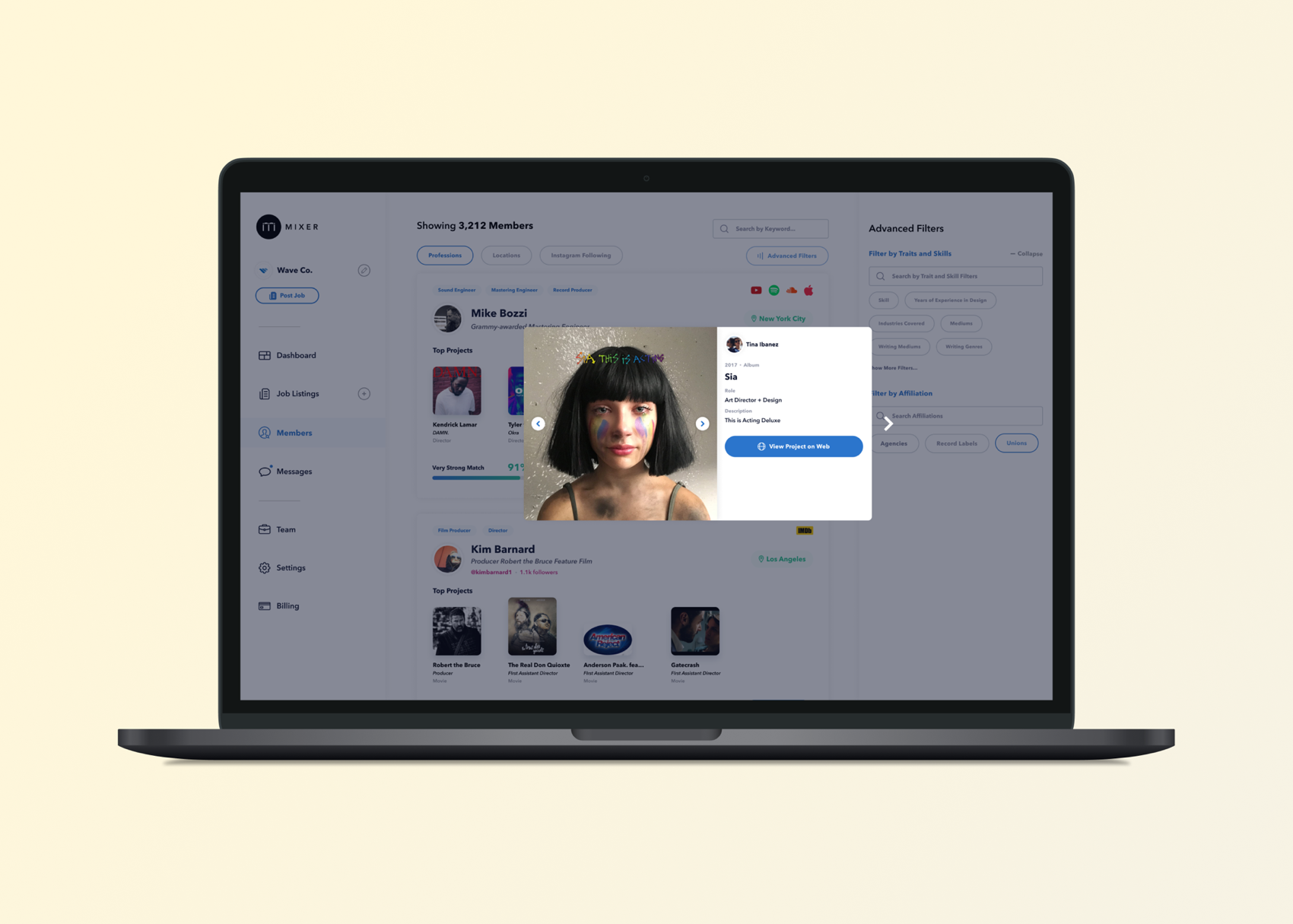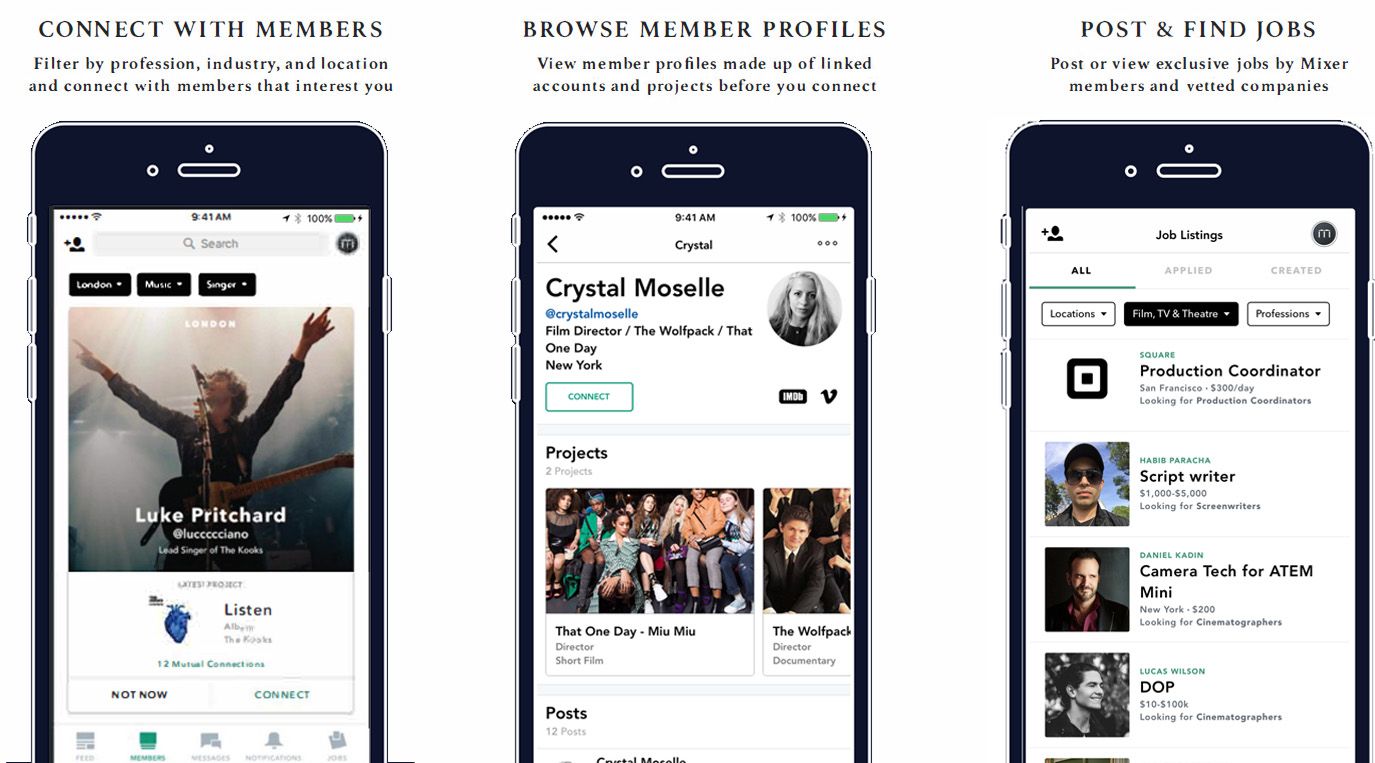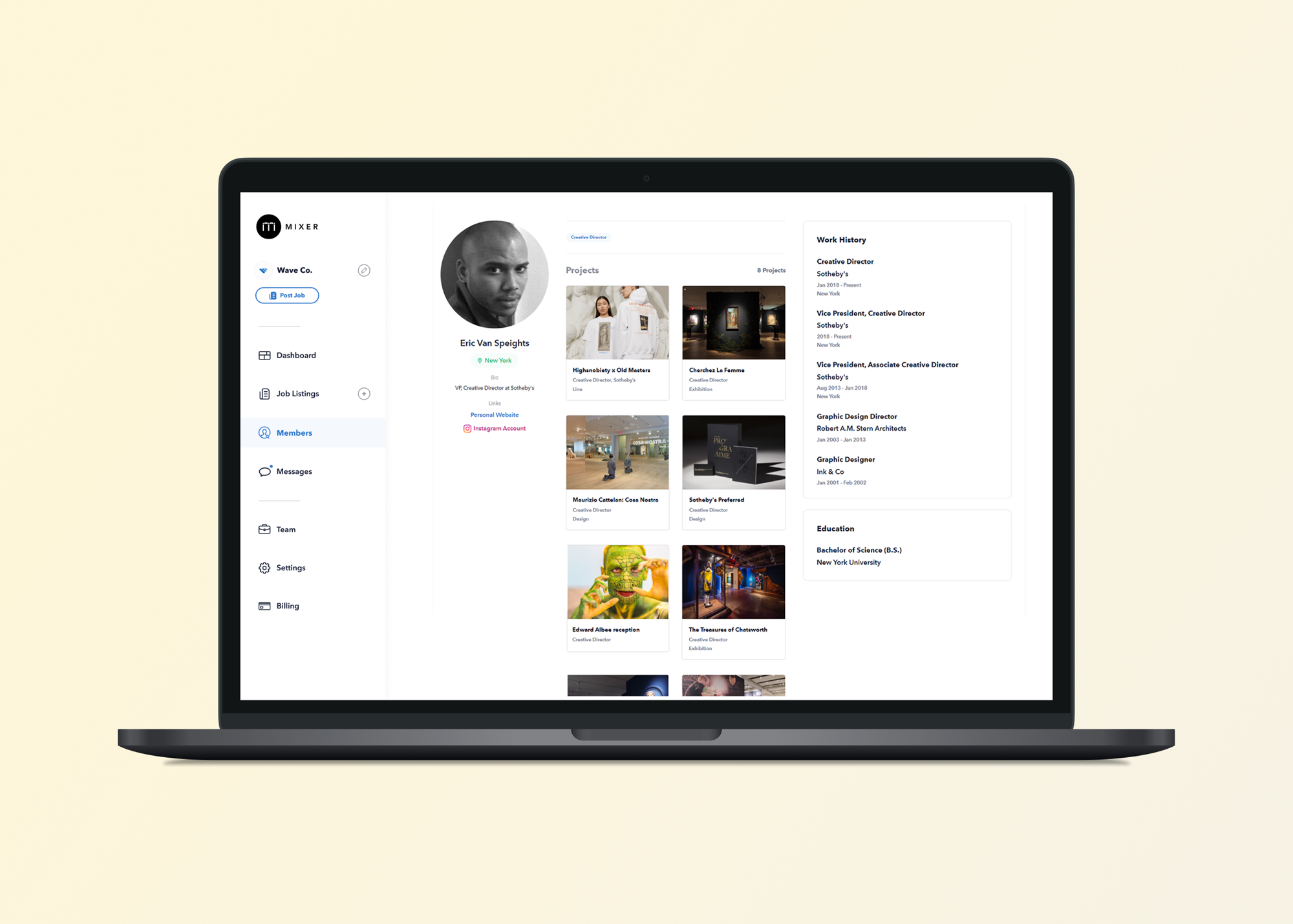Ever Wondered What The Lovechild of Tinder and LinkedIn Would Look Like? This New Platform Might Be It
Cartier, Stuart Weitzman, Celine and others are already in on the concept.

What happens if you take the core ideas of Tinder and LinkedIn and marry the two? If you are a part of the fashion & entertainment talent pool, you are in for a treat. The concept has already been realized and dubbed Mixer, and the new platform is here to help brands and freelance creators skip the perpetual pitching route and use one comprehensive, all-inclusive platform to connect, network and browse job openings.
After launching as a private, vetted community for creatives a few years ago, Mixer has now opened its doors to brands and agencies hiring creative professionals. With big labels like Havas, Square, Cartier, Celine, Assouline Publishing and others already buying into the concept, the pool of vetted talent and available opportunities is truly evergrowing. “We’ve been a mobile-only platform for creatives for years,” said co-founder Anis Bennaceur. “Last year, we soft-launched a desktop platform for brands to start posting jobs on Mixer, and after onboarding multiple brands like Cartier, Stuart Weitzman, The Webster, and Pamela Love, we felt confident to completely open it to all brands.”
As Anis was gearing up for the big January 2021 launch, we spoke with the platform’s co-founder about the ideas behind Mixer, the power of celebrity referrals and some of the perks that come from using the new platform.
For all of that and more, read the full interview below:

Can you tell us a little bit about yourself and your background — how did you get involved with the fashion/media industry? How did you go about launching the platform?
Though born in the U.S., I’m originally French and Tunisian. I’ve studied business in France and worked a little over a year in investment banking before moving on to tech and starting to work for Tinder in France when the platform was just 6 months old. I helped them grow their initial userbase in France.
At the time, I had a lot of friends in the creative industries, and while LinkedIn was quite notorious in the corporate world, it felt like there was a void that needed to be filled in the creative world. So after discussing it all over a steak-frites lunch in Paris with Alex Carapetis, we had a Skype call and a few drinks with Cody Simons, an entrepreneur, and Harvard grad, and decided to all join forces on Mixer.
At the time, we wanted to build a private network for creatives where people could connect and collaborate, we were convinced that all of the creative industries were interconnected. And one day, Condé Nast reached out to us for one of their projects with Gucci and asked us to help them out filling some positions in a short time frame. That’s when we started identifying the potential to have brands tap into our network and build a jobs marketplace on top of it.
In your mind, who is your target audience? What kind of person would benefit from using Mixer?
We started out with a top-down approach where we wanted the leading musicians, filmmakers, photographers, models, writers, art and creative directors of this world to join first. That’s not sustainable over time, however — so we opened up the gates to all types of creatives, so long as they have editorial or commercial work or released projects that received some kind of recognition. The short answer is that all those people benefit from our platform.
We see two value drivers behind Mixer. The first one is out of the connections that members create, and that’s really up to them and what they make out of it — I’ve seen a lot of creators from different industries and countries link and work together. From that perspective, all creatives — leading or up-and-coming, working in the advertising, arts, fashion, film or music — can benefit from using the platform.
The second value driver is our jobs section, which we’re boosting today. As a brand or producer, there’s a lot of value in receiving qualified candidates for a specific freelance or permanent job in less than 72 hours. On the other side, as a creator, you want to focus on what you enjoy doing the most — which is creating. You don’t want to waste time chasing opportunities and continuously pitching brands in order to secure your next gig. So through the jobs marketplace, we’re bringing creators more opportunities at the push of a button. More specifically, the formats of content creation are evolving today, and with traditional ways of networking/getting jobs, you might miss out on opportunities. What we want is to get as many opportunities to creatives while also providing producers and talent bookers/hirers with great tools to find solid candidates as quickly as possible.
As of now, is the platform invite-only? Can you walk us through the process of creating and promoting a profile on Mixer?
Mixer has a vetting system where you won’t get approved until you fully finish your application, link your social accounts, and add your past projects. It’s not invite-only, but having a referral code helps expedite the application process.
Once you’ve entered all your basic info, you can link all your social accounts such as Instagram, Vimeo, YouTube, Spotify, etc. And as the last step, you can add your portfolio of work, which gets reviewed. Once you’re approved, your profile becomes publicly visible on mixer.co.

What is it that makes Mixer stand out as a platform? Why should someone use it instead of hiring talent and creatives the old-fashioned way, through a talent agency?
Our talent pool has been vetted, so you know that you’ll get high-quality applicants for your projects. It’s wider than any agency’s talent pool. Our process is much more efficient and transparent; there’s no need to go through agency negotiations or having to pay the heavy commission fees.
Additionally, the data coming from our members’ profiles helps a lot. Let’s say, you want to find an NYC-based art director who has worked with Nike or L’Oréal — Mixer will help you find exactly what you want in a few clicks, and you can reach out to them. Within our internal search engine, we’ve included advanced filters that, for example, allow you to quickly show only creatives that work in the advertising world, or members who have print experience, etc. Having direct access to this info can be quite powerful for brands.
You have quite a lot of high-profile celebrity members on your roster. How did you have these big creatives and brands join the platform?
A lot of people who have signed up to Mixer were referred by their friends — a referral is the most powerful tool for growth. And then, when we notice interesting profiles, we directly reach out and invite them to join our platform.
What do you think attracts these powerful, established creatives to Mixer as a platform? Are there any projects or gigs they have been able to get as a result of networking on Mixer?
A lot of the attraction to Mixer first comes from word of mouth. When you don’t know the platform at first, you don’t really know what to expect until you start playing with it, flicking through the profiles or going through the projects feed.
There are countless stories of projects that happened through Mixer. I’ve seen one of Wu-Tang Clan‘s sound engineers connect and work on projects with top tier actors who wanted to record music. I’ve seen members of headlining bands link with 3D animators for a music video. I have this story of a foreign graphic designer who ended up working with Cult Records, and she told us that she would’ve not had that chance without Mixer. To me, these cross-industry stories are the most interesting. And then, through the jobs marketplace, we’ve seen over 3,000 jobs getting filled.

You are about to launch a brand new web platform for Mixer — what’s the significance of this move?
We’ve been a mobile-only platform for creatives for years. Last year, we soft-launched a desktop platform for brands to start posting jobs on Mixer, and after onboarding multiple brands including Cartier, Stuart Weitzman, Square, Havas, the Webster, Pamela Love, and Assouline Publishing, we felt confident to completely open it to all brands.
What’s your goal with Mixer? Where do you hope to take the platform in the future, what’s next?
Our goal at Mixer has always been to get rid of the ugly expression “starving artist.” We want to provide more opportunities to creators and help them get more consistent work, especially during this unemployment crisis caused by COVID-19. This coming January, we’re launching a web platform for our members that will include a lot of powerful tools.
We’re also looking into tackling the payments and insurance problems for freelancers. As a freelancer, not knowing when your next paycheck is coming because of payment delays is incredibly stressful. We want to take that stress away, and insurance is closely tied to financials — handling that will be a gamechanger… But I don’t want to give away too much!
Anything else you want to leave our readers with, maybe something we haven’t touched on that you want people to know about Mixer?
One last point that I wanted to communicate is that Mixer can be incredibly helpful for any industry. On Mixer, we already have ad agencies, healthcare companies, tech groups, emerging and established fashion brands, fast-growing D2C startups, production houses, record labels, etc. Our network is wide enough so that you can find exactly what you need, in short delays, without compromising on quality.
Discover More
